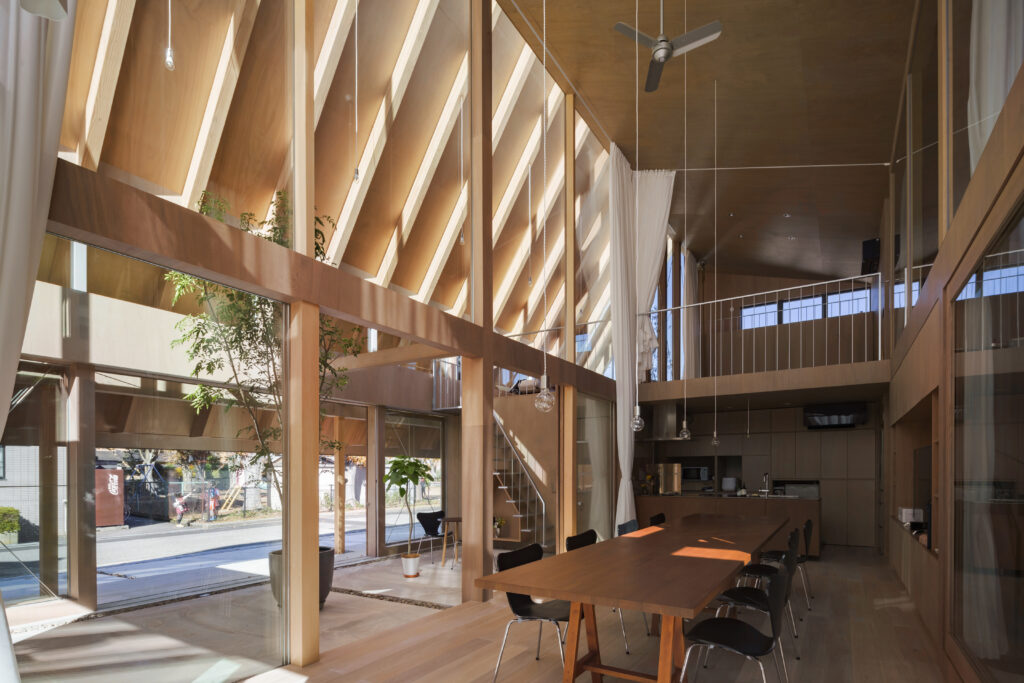
Photo by Shinkenchiku-sha
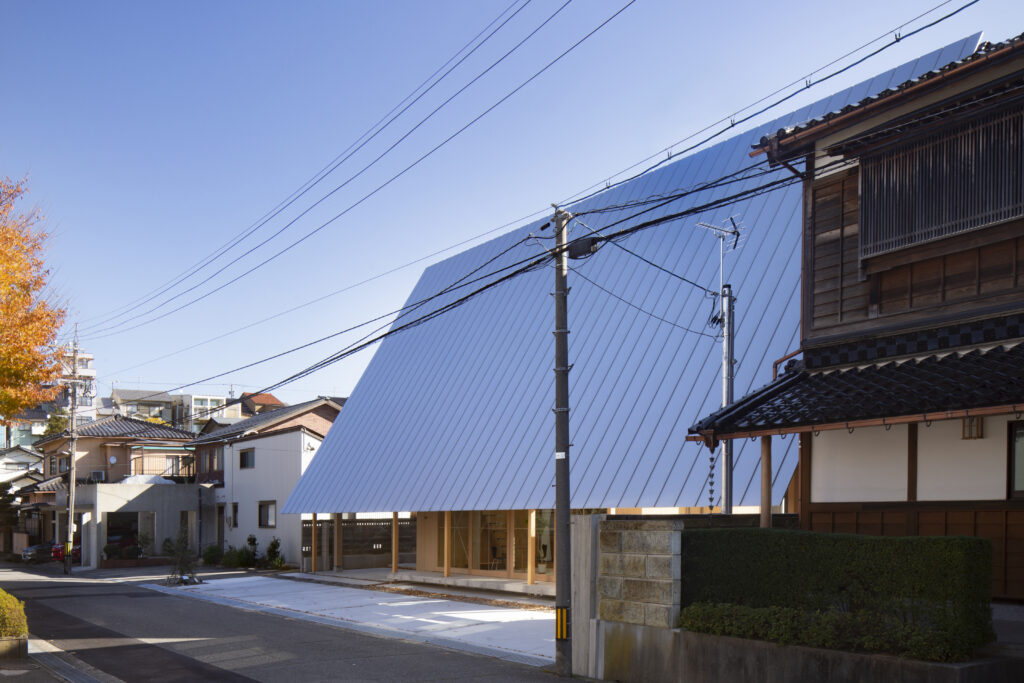
Photo by Shinkenchiku-sha
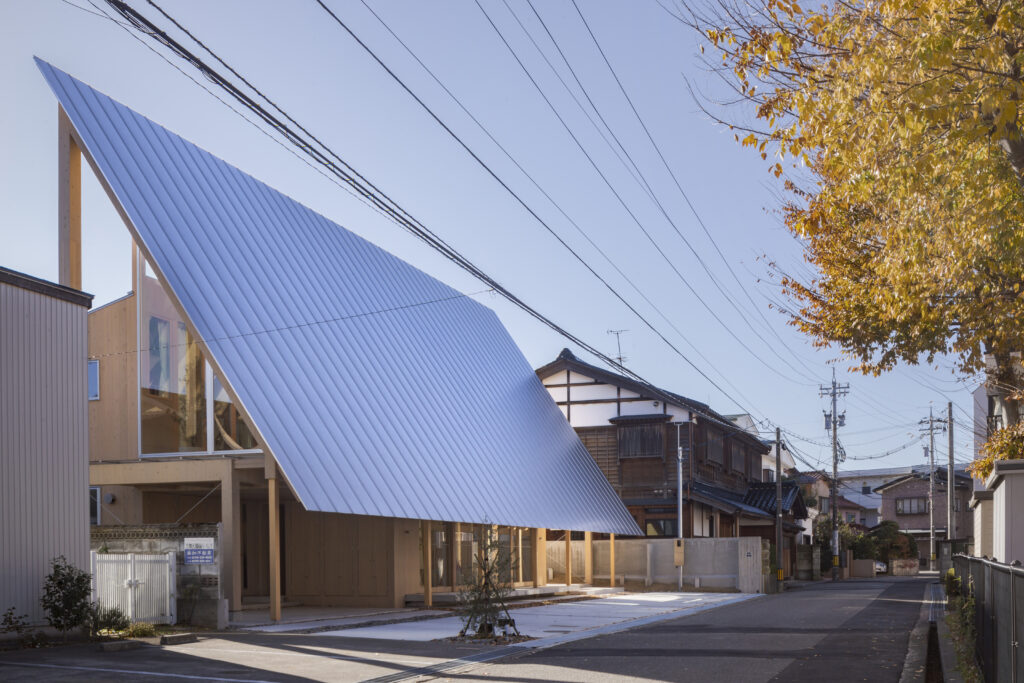
Photo by Shinkenchiku-sha
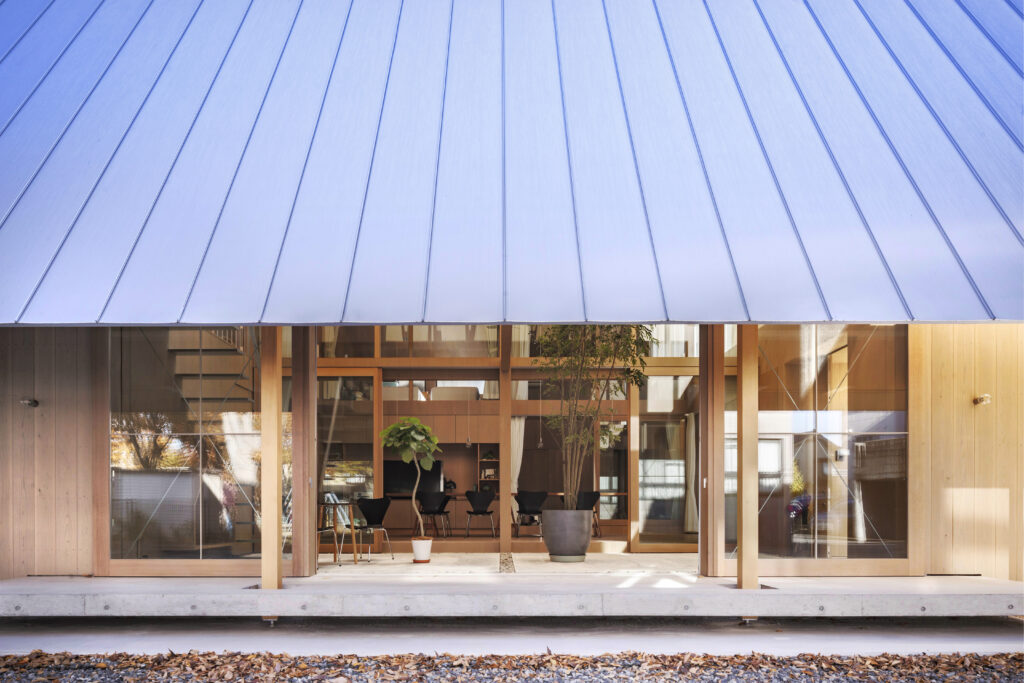
Photo by Shinkenchiku-sha
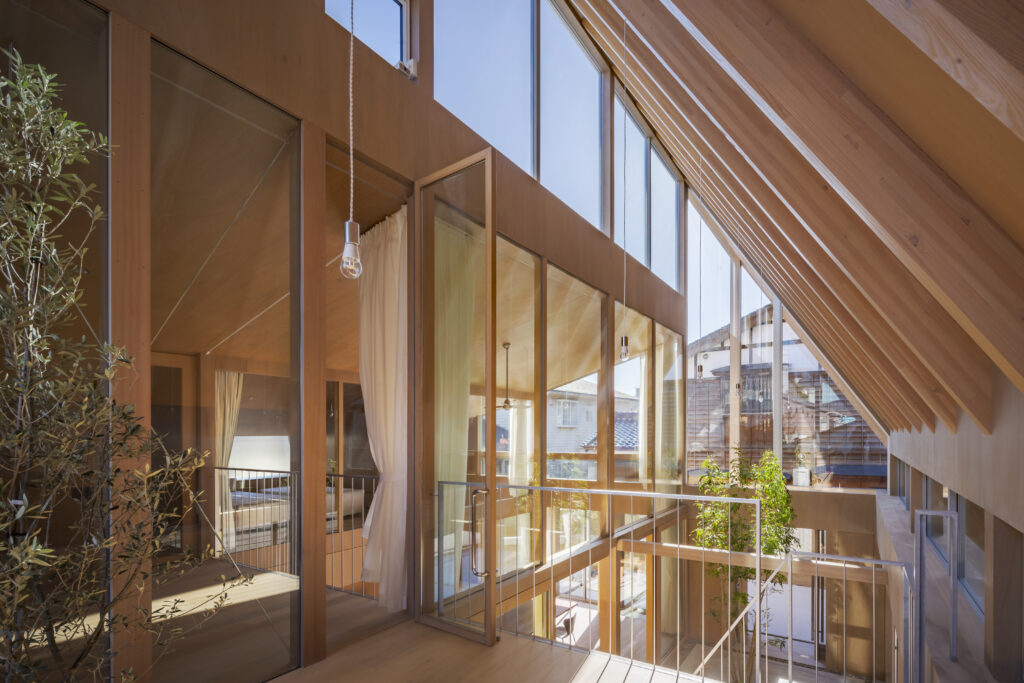
Photo by Shinkenchiku-sha
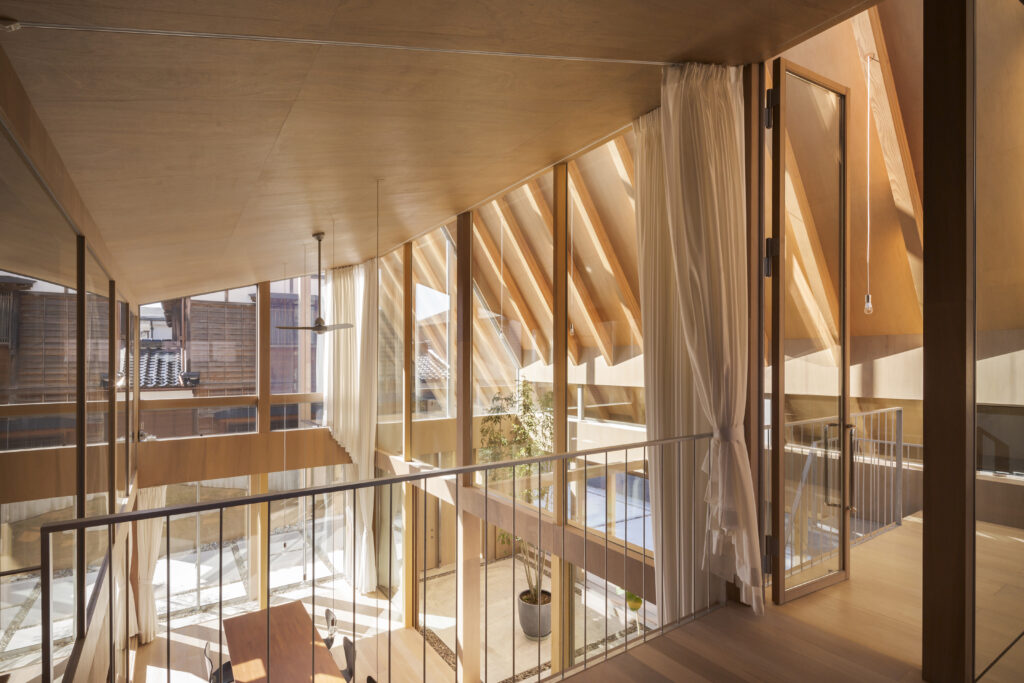
Photo by Shinkenchiku-sha
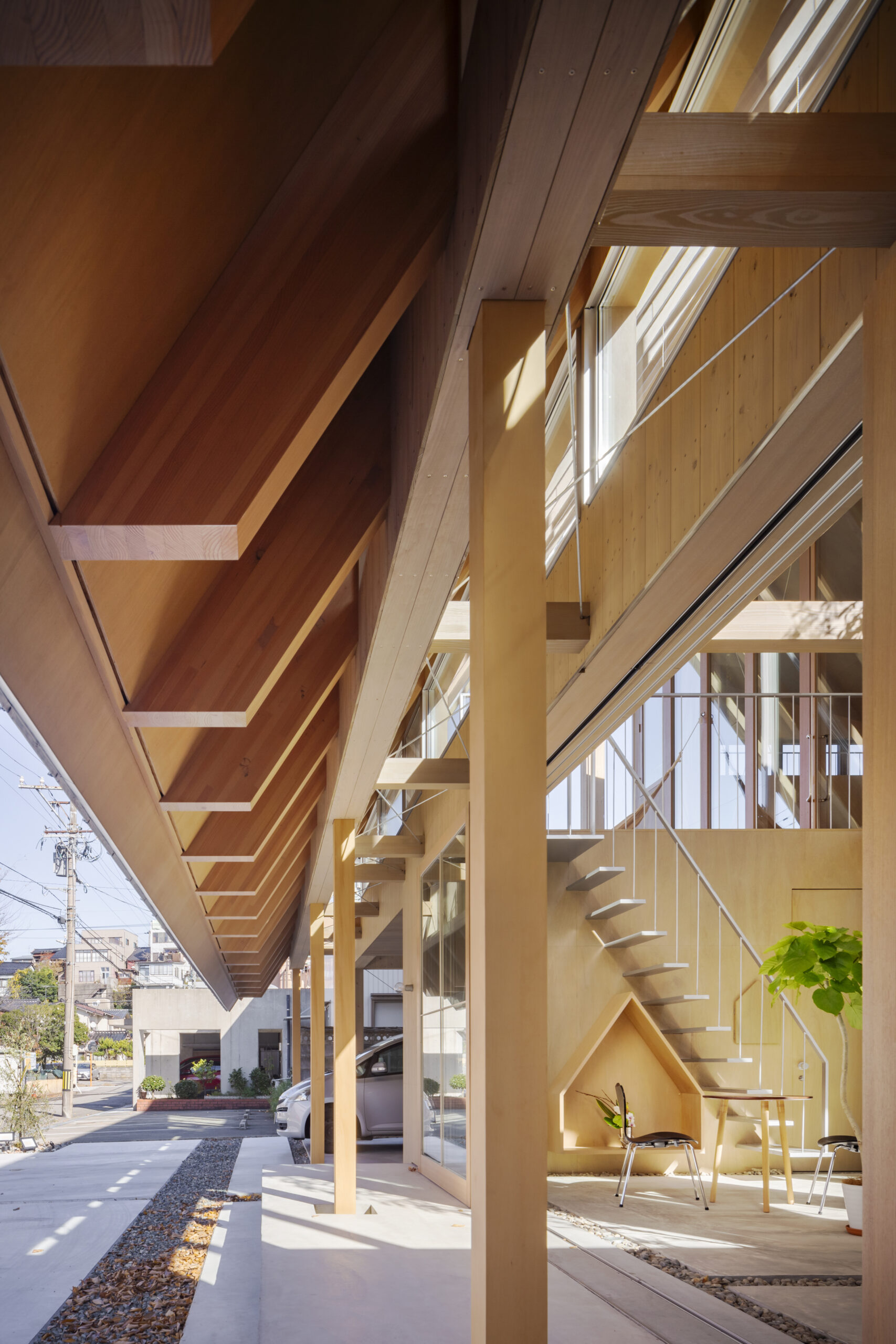
Photo by Shinkenchiku-sha
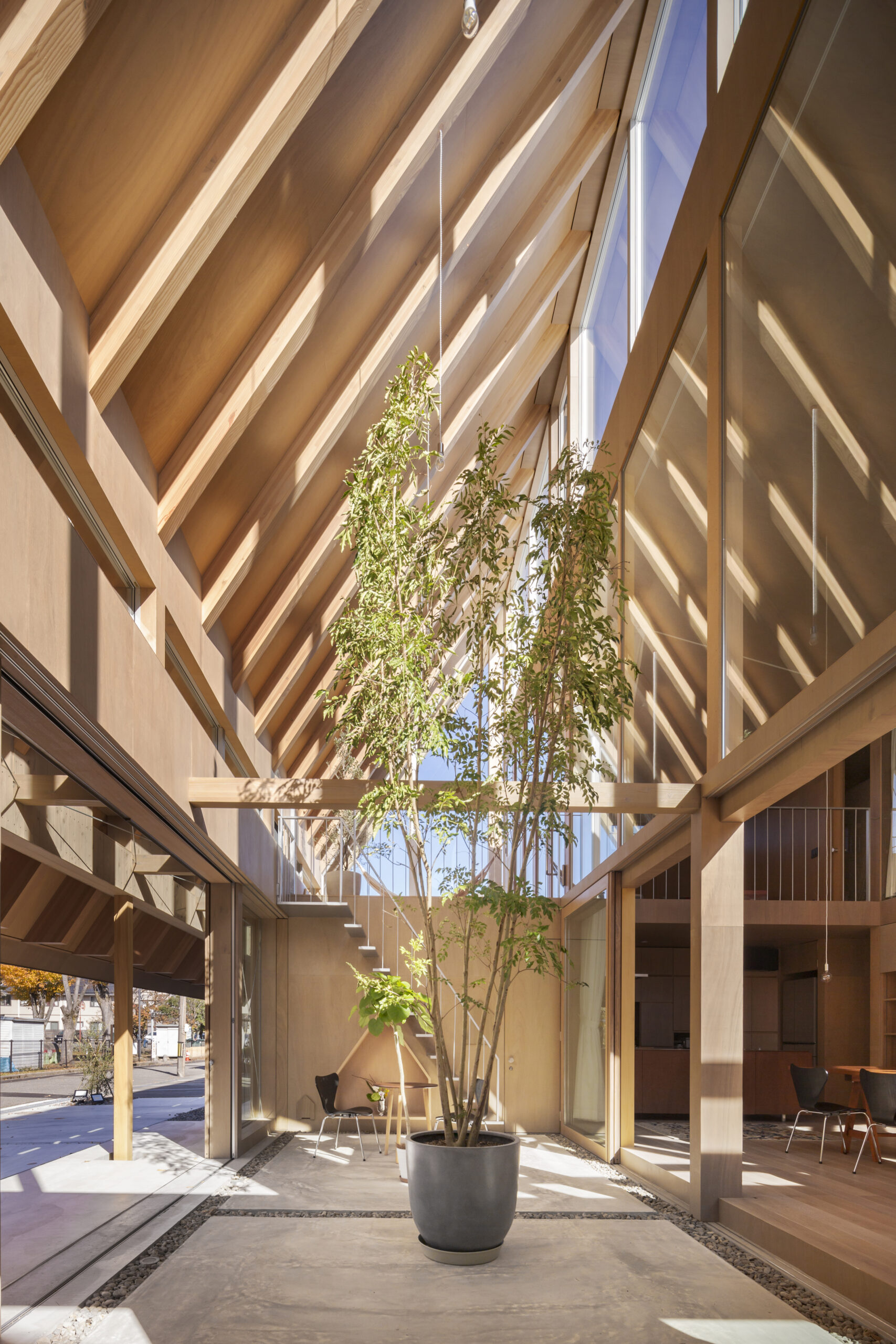
Photo by Shinkenchiku-sha
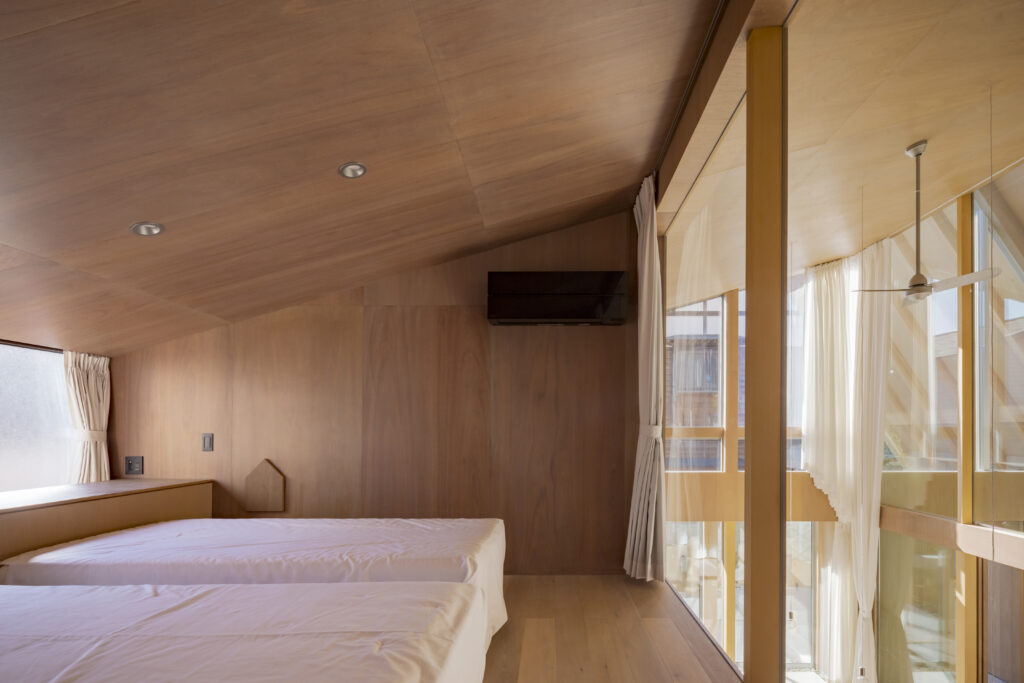
Photo by Shinkenchiku-sha
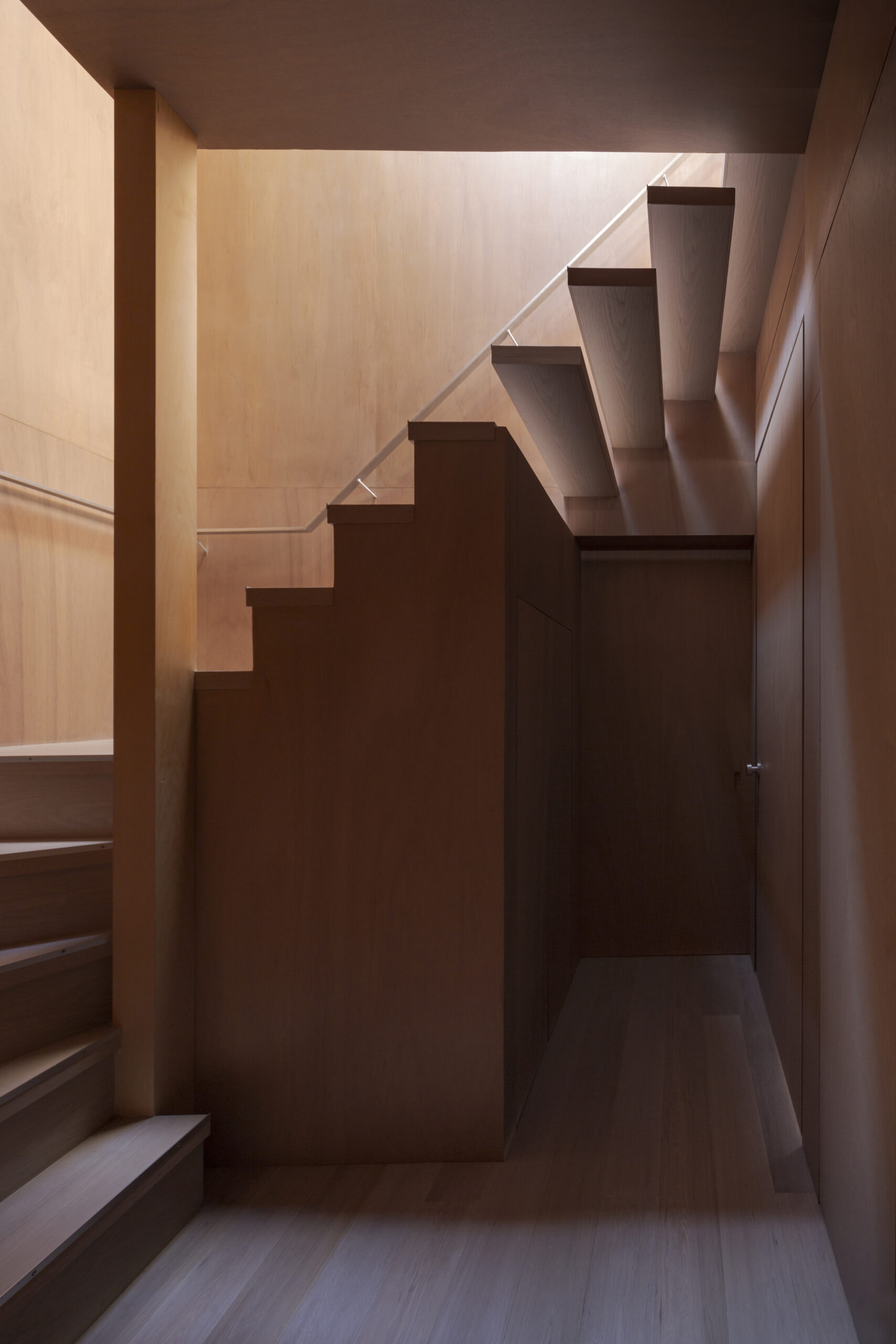
Photo by Shinkenchiku-sha
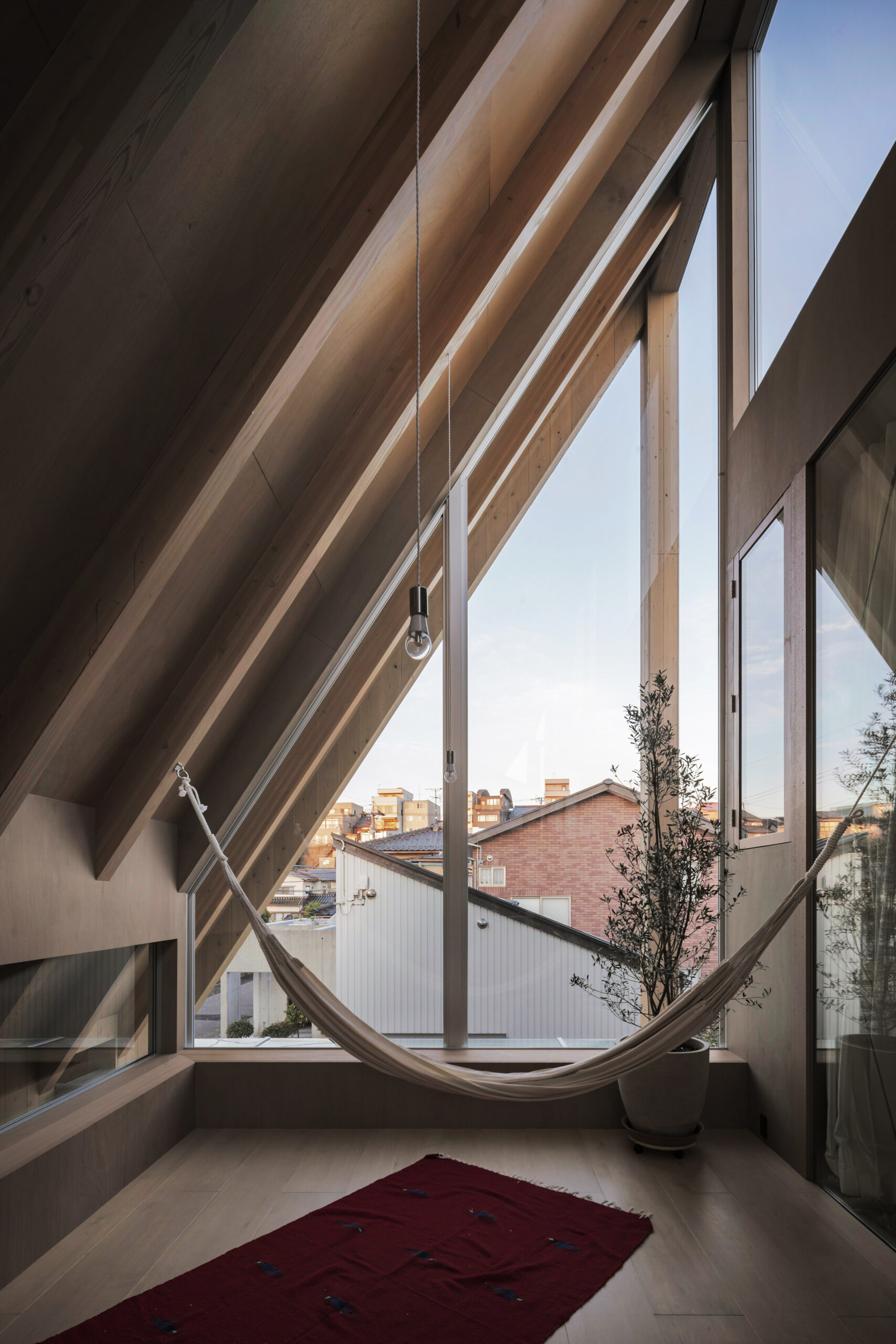
Photo by Shinkenchiku-sha
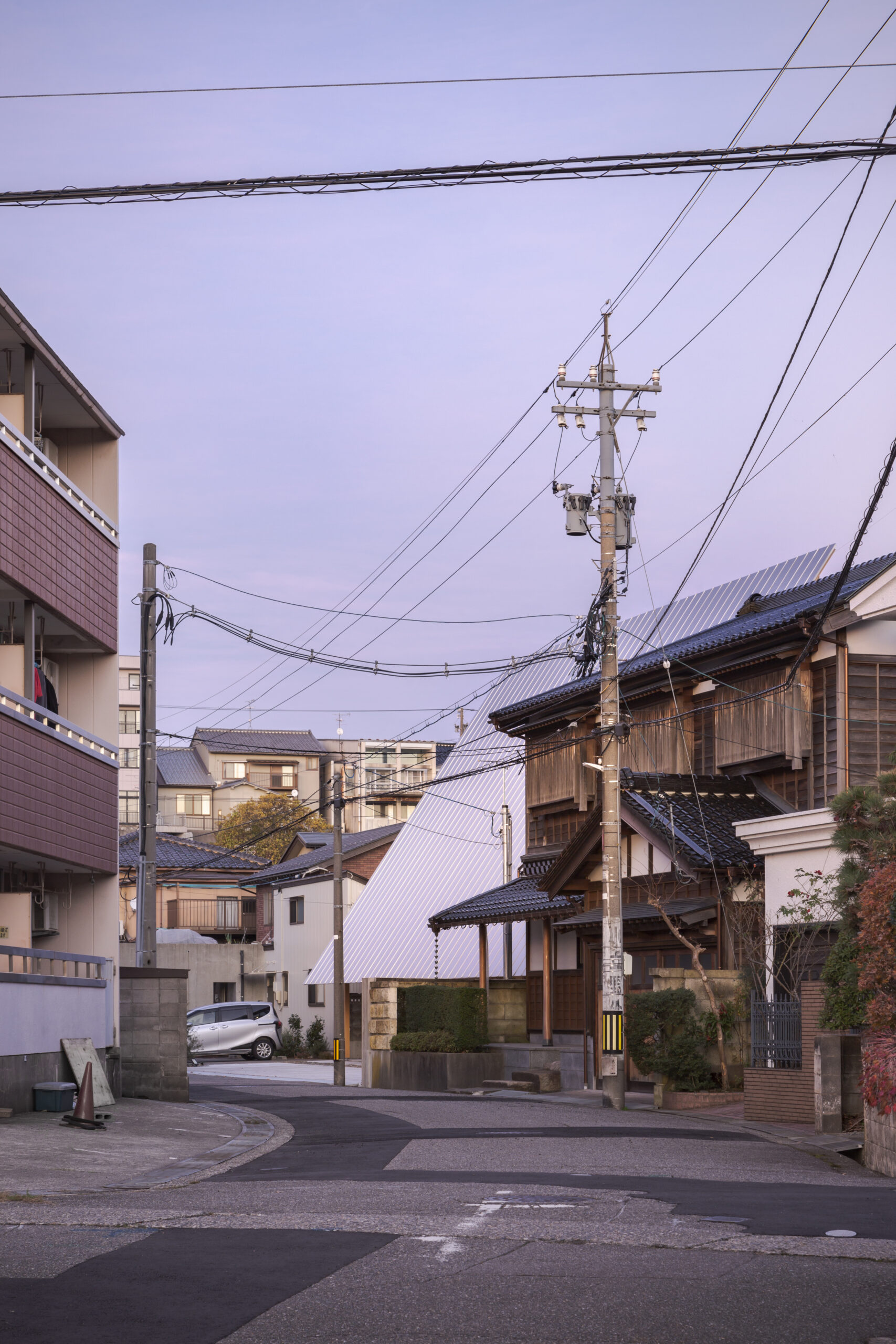
Photo by Shinkenchiku-sha
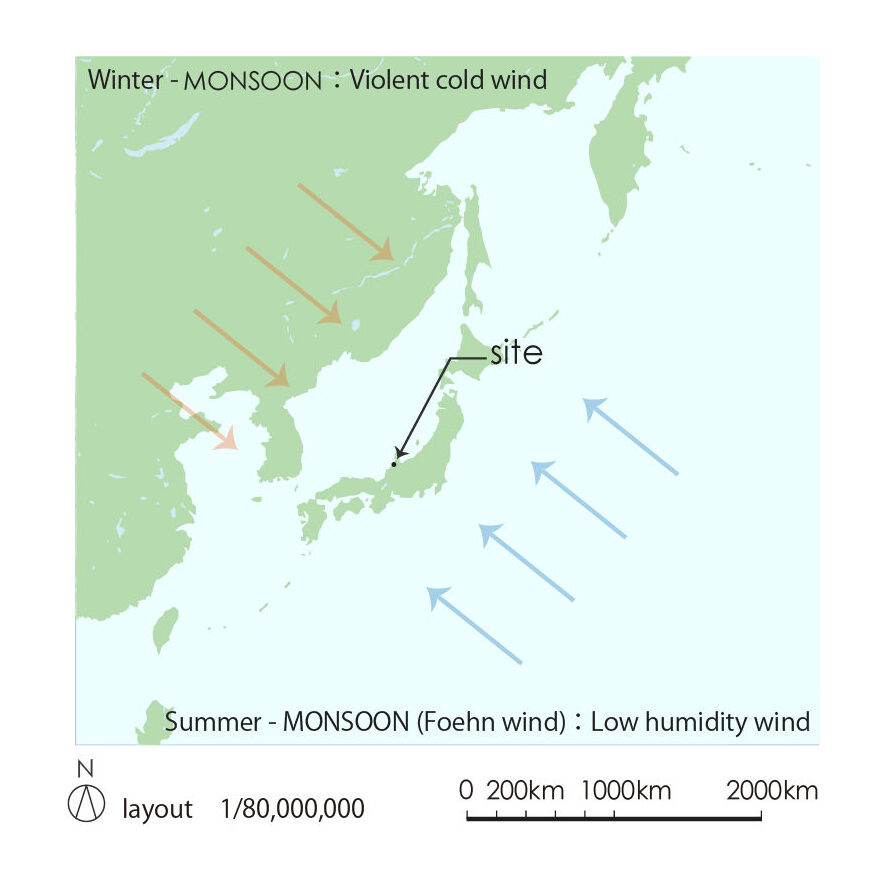
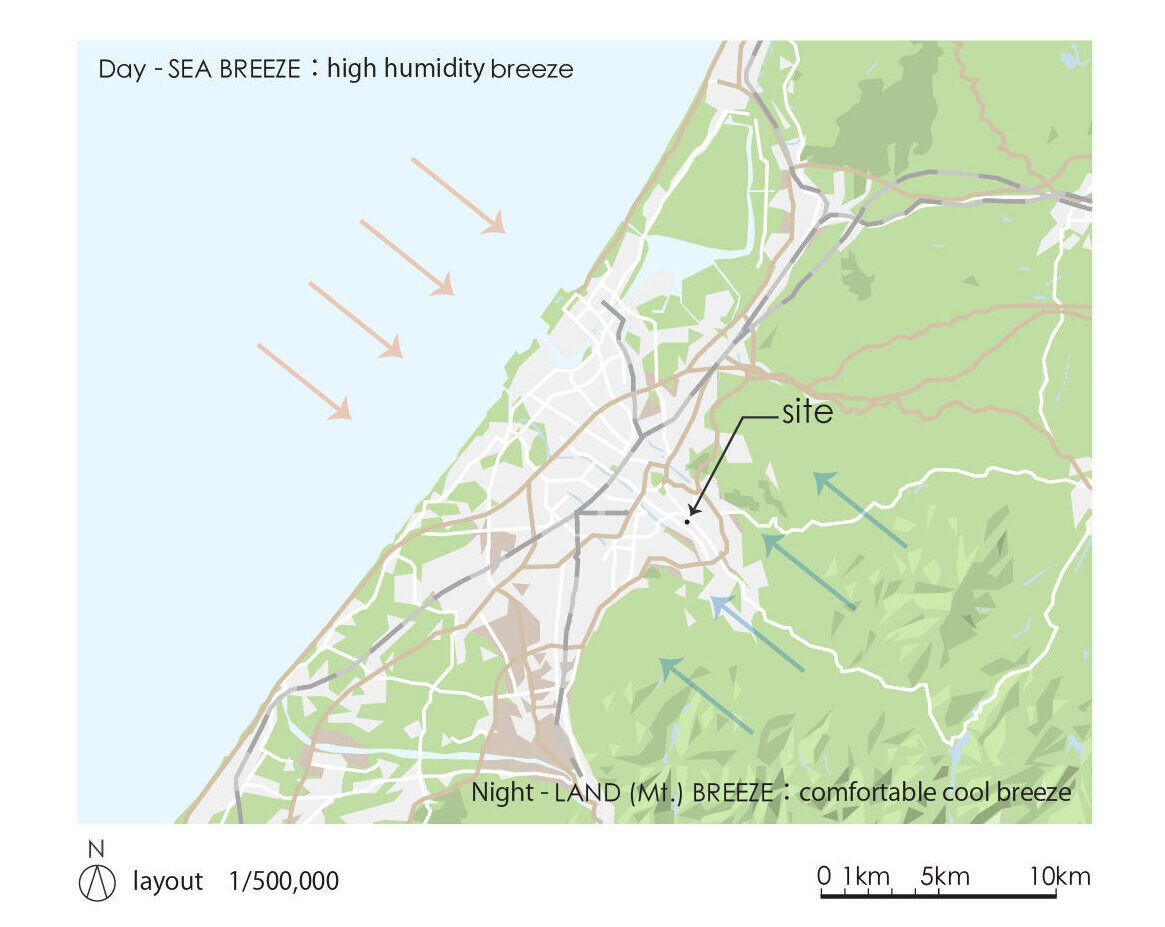
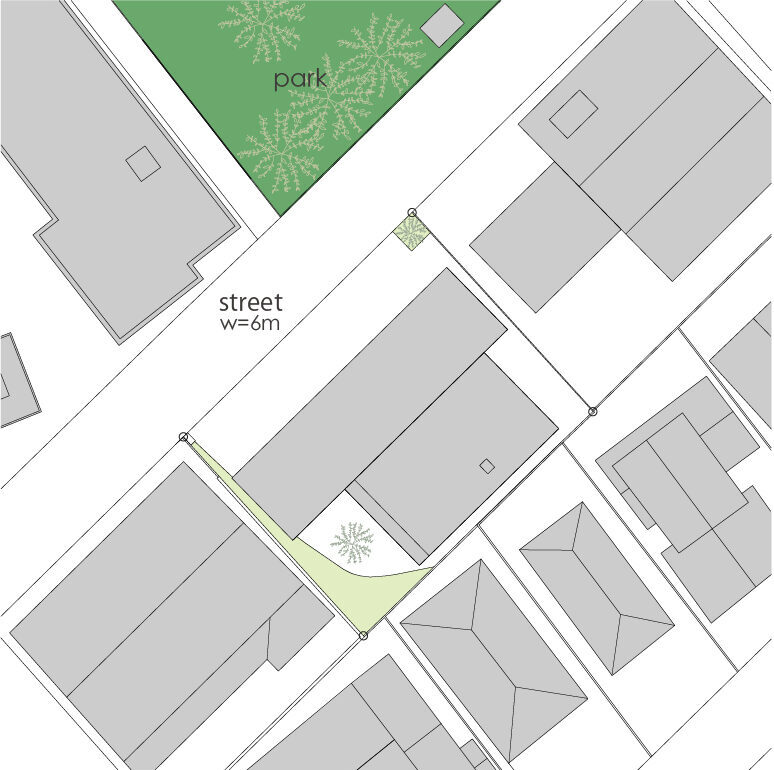
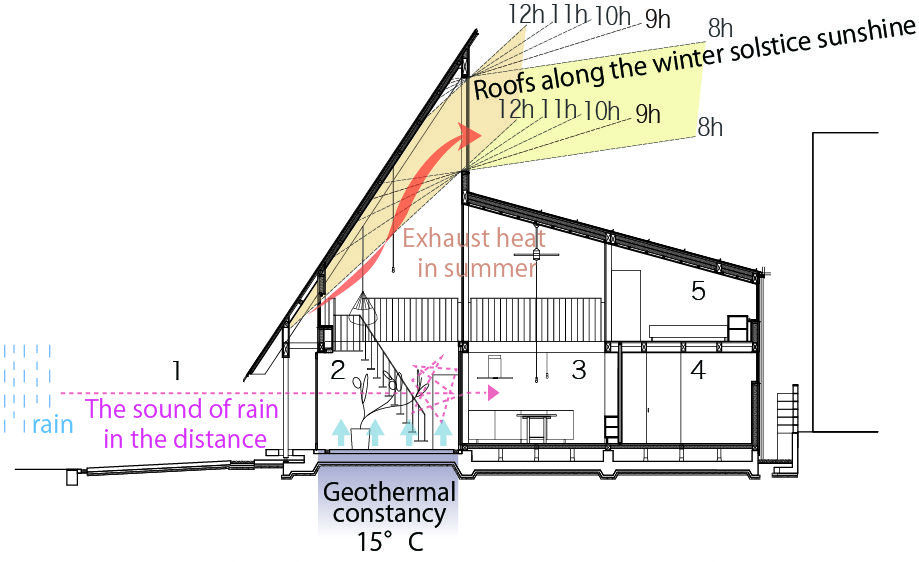
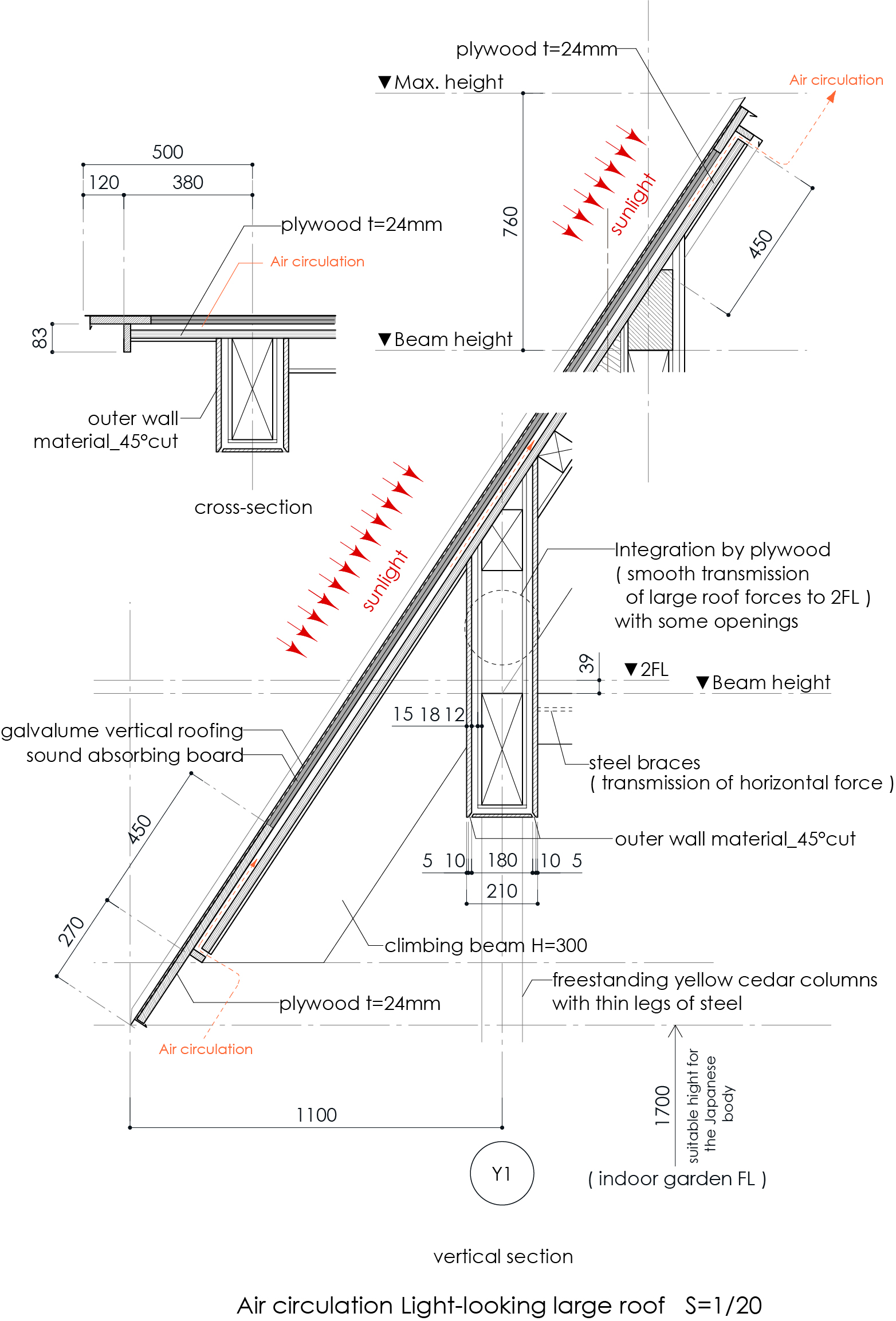
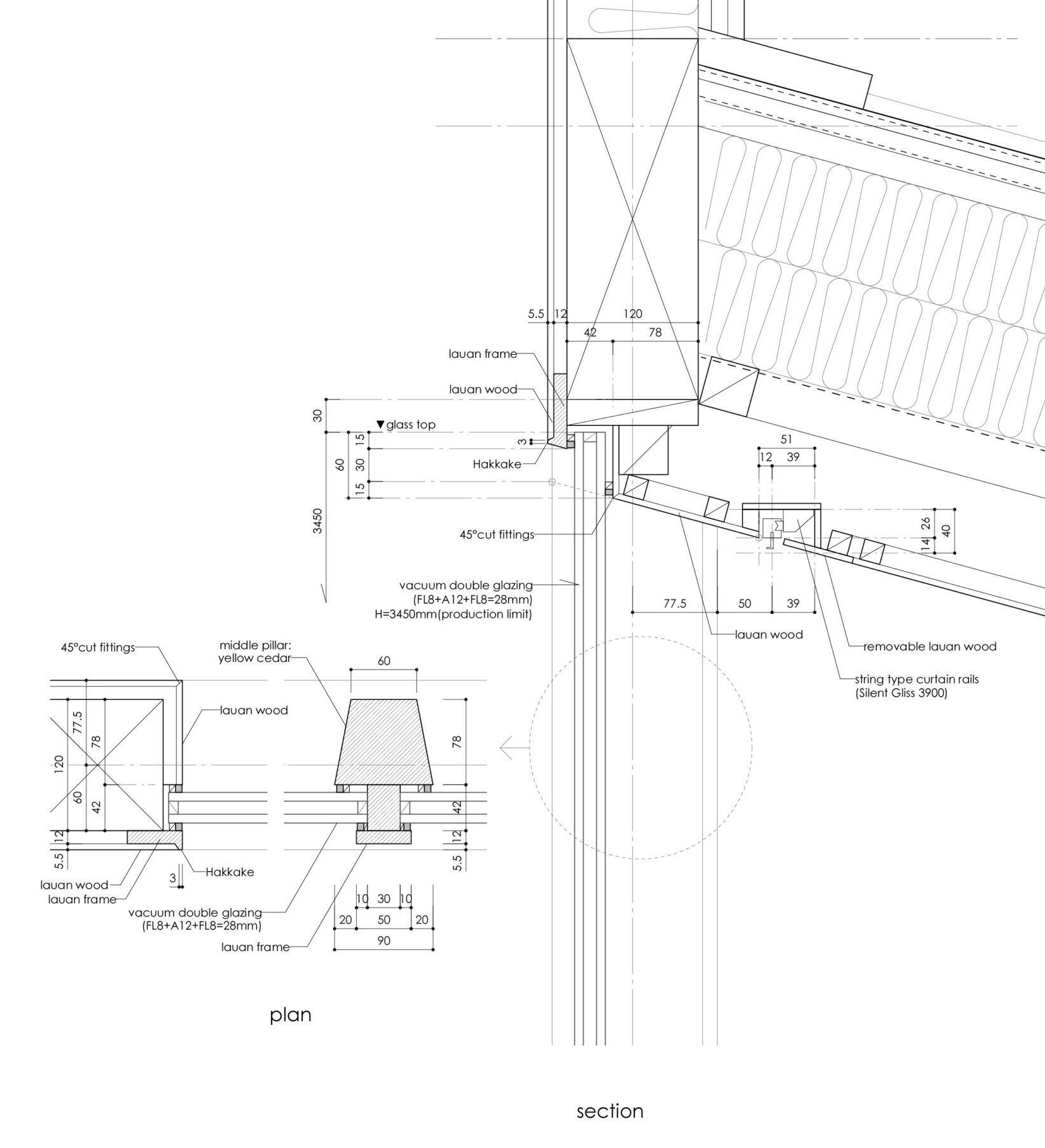
新しい地域性を目指して
(English Below)
敷地は北陸地方にある石川県金沢市の住宅地。北陸は日本の本州で最も雨の降る日が多い。
この住宅では、北陸の伝統的建築に見られる自然環境を活かした建築的仕組みや立ち姿を踏襲しつつも、建主の暮らしぶりや諸条件と向き合い、プランや光環境、音環境を丁寧に設計していくことで、室内にいながら光や風、自然環境音に触れて生活できる住宅を目指した。
計画では、北陸の伝統建築で客人との交流の場ともなるエントランスの土間を屋内庭園として捉え直し、大屋根で太陽光を取り込むことで、悪天候や寒い冬でも屋内で開放的に暮らせるようにした。直射光は、夏は涼しく冬は暖かくなるよう季節ごとに調整されている。また、大屋根裏へ朝の光を大量に取り込むことで、ダイナミックな光景を演出している。
伝統的な北陸建築と同様、土間は大きな建具で内外を仕切り、風雨の音や雷鳴を視覚的な距離よりも遠くに感じられるように調整し、風雨をしのぎながら美しい動きのある景観として楽しむことができる。
この建築は、単一のコンセプトや図式とは対極にあり、多くの小さな思考を重ね、人を含めた環境全体の調和を目指して形態が決定されている。
「帰りたくなる家」というクライアントの要望に対して、季節や時間ごとの魅力的な思い出が蓄積され、時間の経過とともに空間の魅力が深まる家を提案した。
・
・
Toward a New Regional Character
The site is a residential area in Kanazawa City, Ishikawa Prefecture, in the Hokuriku region. Hokuriku has the most rainy days in the Japanese mainland.
In this house, we aimed to create a house where people can live in contact with light, wind, and natural environmental sounds while staying indoors by carefully designing the plan, light environment, and sound environment by facing the lifestyle and various conditions of the owner, while following the architectural structure and standing style that makes use of the natural environment found in the traditional architecture of Hokuriku.
In the plan, the earthen floor at the entrance, which is a traditional Hokuriku building and a place for interaction with guests, was rethought as an indoor garden, and a large roof was used to let in sunlight so that people can live openly indoors even in bad weather or cold winters. Direct sunlight is seasonally adjusted to keep the house cool in summer and warm in winter. In addition, a large amount of morning light is brought into the large attic to create a dynamic scene.
As in traditional Hokuriku architecture, the earthen floor is separated from the interior and exterior by large fittings, which are adjusted to make the sounds of wind, rain, and thunder seem farther away than they are visually, creating a beautiful, moving landscape that can be enjoyed while sheltering from the elements.
This architecture is the opposite of a single concept or scheme, and its form was determined by many small thoughts, aiming for harmony of the entire environment, including people.
In response to the client’s request for a “house that makes you want to go home,” we proposed a house in which charming memories of each season and time are accumulated, and the charm of the space deepens with the passage of time.

